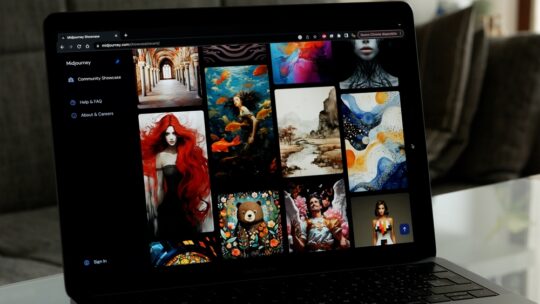
This week's PR Roundup explores AI workslop invading productivity, a new study showing journalist's dissatisfaction with public relations professionals utilizing AI for media relations, and how the new host of "Reading Rainbow" was chosen via social media.
AI Workslop Wreaks Havoc on Productivity
What happened: While AI continues to be touted as the next great invention for worker productivity, employees seem to be finding the opposite as “workslop” emerges on the scene.
Harvard Business Review recently published an article examining the trend. HBR defines workslop as “AI-generated work content that masquerades as good work, but lacks the substance to meaningfully advance a given task.”
In short? Content or work created with AI tools that appears legitimate, but yields errors in fact, grammar and personality. The emergence of workslop actually creates more work for people when they have to provide additional edits, clarifications or just rebuild the content altogether.
You may have seen these types of drab, peculiar, AI-generated content posts now flooding social media channels—affectionately referred to as “AI slop.”
HBR explained how workslop can take over otherwise capable teams:
“As AI tools become more accessible, workers are increasingly able to quickly produce polished output: well-formatted slides, long, structured reports, seemingly articulate summaries of academic papers by non-experts and usable code. But while some employees are using this ability to polish good work, others use it to create content that is actually unhelpful, incomplete or missing crucial context about the project at hand. The insidious effect of workslop is that it shifts the burden of the work downstream, requiring the receiver to interpret, correct or redo the work. In other words, it transfers the effort from creator to receiver.”
And according to Mariangela Caineri Zenati, Marketing Manager at social media management platform Loomly, despite the vast potential of AI, many employers are struggling to see a return on their investment.
“While around 80% of organizations have integrated AI tools into their workflows in 2025, a staggering 95% are getting zero return, raising serious questions about the effectiveness of current AI adoption in enhancing workplace efficiency,” she says.
Communication takeaways: Workslop can impact any industry, and PR and communications is no exception. In fact, because of the bevy of AI tools emerging for PR pros, they may be more apt to find themselves wading through the mess: ChatGPT-composed press releases and pitches, deepfake videos of leadership, falsely-calculated measurement and the like.
Drew Olanoff, Co-Founder at Thumbs Up, a strategic communications consulting practice, wrote about the phenomenon on LinkedIn, actually seeing it as a positive for his growing company:
“Not relying on AI for creativity, content generation and ideation being a competitive advantage for us is not something that I had on my BINGO card…People have sadly become numb to quality and precision of output because they themselves are ingesting mostly AI-directed content. I predict that this won’t last much longer because it’s just not a very effective approach. I’d like to think we’ll play a part in making sure that we don’t end up in a land where humans are using robots to talk to other humans using robots.”
Olanoff offered PRNEWS some suggestions for communicators to avoid workslop.
“First make sure that you're not perpetuating the problem,” Olanoff says. “Meaning, if you're sent some text to edit or clean up that might have been generated, even partially, with AI, then make sure that the AI buck stops with you.”
He notes that the origination of content should be as organic and human as possible, so blocks of texts are not created, reviewed, edited and re-reviewed by several staff members using ChatGPT or another LLM.
“That's multiple iterations with minimal human involvement,” he says. “You don't need to shame anyone, but remind the folks you're working with that a lot of humans still read and not just scan. AI to check grammar? Fine. Come up with a different way to say something? Sure.”
Also he made the point that PR folks need to be especially careful with pitches which can be cast aside as workslop if not given proper attention.
“Journalists can smell AI slop from a mile away since they write for a living,” he says. “Be mindful about what you put into pitches, especially if a member of your team is sending you a production description or bit of content to include.”
PR Survey Findings Show a Credibility Crisis
What happened: A new survey by Global Results Communications unveils a growing paradox in the relationship between journalists and public relations professionals as the result of AI.
In its 2025 Annual Survey of Journalists, while over 80% of journalists note that they rely on PR for content and sources, they are increasingly voicing skepticism over quality—particularly when it comes to the use of AI for PR.
Key findings include:
- AI raises red flags: More than 43% of journalists expressed negative views about AI-generated pitches, citing concerns that they “read like a bot wrote it,” lack perspective and erode editorial trust.
- Heavy reliance continues: 81% of respondents reported relying on PR professionals, at least occasionally, for story content and sources, though nearly half of PR content was rated as poor in quality.
- Content priorities: Press releases remain the backbone of journalist reliance (51%), but demand is growing for thought leadership and case studies that deliver unique, editorial-ready insights.
The 2025 GRC Annual Survey reflects insights from journalists across digital, print and broadcast media, with a strong representation from technology, healthcare and business reporters.
Communication takeaways: As Olanoff mentions in the previous section, journalists can sniff out AI-written pieces like bloodhounds. When asked about the use of AI in crafting press releases and pitches, only 12% of journalists responded positively, while nearly 44% viewed it negatively. Respondents equated AI-generated content with “cookie-cutter” approaches saying they diminished credibility, underscoring a need for human oversight and authentic storytelling.
Valerie Christopherson, Founder and CEO of Global Results Communications, says AI has become a polarizing issue in media relations.
“Our survey shows that while journalists recognize the efficiency AI brings, they overwhelmingly want human insight, editorial context and authenticity,” Christopherson says. “The future of PR isn’t about replacing the human voice with technology, but about using technology to enhance it.”
She also notes that the industry can build trust not by pitching more, but by providing more thoughtful, smarter storytelling.
“Reading Rainbow” to Return with a Viral Librarian as its Host
What happened: Guess what’s coming back? “Reading Rainbow” has returned for a new generation of readers—and this time, it’s digital, with Mychal Threets (aka “Mychal the Librarian” on TikTok) stepping into the host role.
The revived series will release new episodes on KidZuko, a kids' YouTube channel from Sony Pictures Television, starting October 4, with celebrity narrators like John Legend, Chrissy Teigen, Ebon Moss-Bachrach and more. The episodes will also be available on the “Reading Rainbow” website.
And Threets, a former California library supervisor, isn’t just a fresh face—he’s built a social media following by sharing daily posts championing libraries, mental health and the joy of reading. He’s also publicly embraced his LeVar Burton (former “Reading Rainbow” host) fandom, saying he hopes the original host might make a cameo someday.
Communication takeaways: Brands are increasingly employing influencers and content creators to become not just contributors but leaders of their organizations. Entertainment is another aspect of this evolution.
Monica Caponigro, Managing Director of Bobbie (the influencer and creator agency launched earlier this year from HUNTER), says that digital credibility can rival and sometimes outweigh traditional celebrity.
“Threets built trust by showing up online with real stories and genuine connection, which makes him the perfect successor to LaVar Burton,” she says. “After all, the magic of "Reading Rainbow" has always been about connection, not clout.”
She notes that for brands, the lesson is clear.
“The best partnerships happen when a creator already embodies what you stand for, not when you retrofit your message through them.”
Caponigro offers important lessons for PR folks from this launch:
- Announcements are social first: The reveal came via Instagram, not a press release. Brands should treat creator channels as powerful earned media engines.
- Authenticity fuels momentum: Threets’s audience already believed in his love for books and community, and that credibility is key in garnering support from other creators and literacy advocates. In turn, the announcement is driving huge positive sentiment for the show (example here).
- Pair nostalgia with fresh credibility: Choosing a beloved librarian honors the show’s legacy while ensuring authentic connection with today’s audience.
Nicole Schuman is Managing Editor of PRNEWS.
